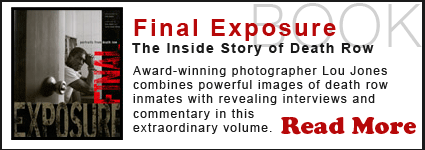Stock Photography And The New Getty Images Contract
Wednesday, May 4, 2011
Back in the 1980s I traveled down to New York City & met with THE IMAGE BANK. Although stock photography had been around a long time, this new iteration revolutionized photography forever. From what had previously been outtakes, the new idea was to combine the best photographers, the best photography & the best marketing. It treated good photography with respect & I wanted some of that. A new era was born.
I traveled the world shooting assignments & “in my spare time” I submitted pictures to Image Bank. Eventually the checks became substantial. Our relationship matured. I visited the offices of Image Bank’s subcontractors all over the world. They helped me find assistants in Brazil, Japan, Austria, Korea. In other cities, they advised me about local customs & protocol. For awhile TIB positive blood flowed through my veins. And together we split the proceeds 50/50.
The model was so successful that Image Bank was sold—twice. And then things changed. The bean counters got involved & realized they did not need photographers anymore. Photography was so abundant it became a commodity. Shrewd business managers analyzed how important photography was to communications, design & new technologies & they marginalized the creators, artist & content providers because acquiring imagery had become so much easier.
Image Bank became Getty Images. With competition from so many other companies who emerged to better fulfill the voracious appetite for photography, prices started to plummet. Then new paradigms arose to replace the original methods. Royalty free, microstock, Flickr, free crept into the lexicon & heralded a sea change in the industry.
These “new ways” to “sell” stock gave all skill levels of photographers the opportunity to enter the marketplace, which was democratic, but it destabilized that very same marketplace. Clients & end users took advantage of our lack of cohesion & unity. Divide & conquer.
The contracts from traditional stock agencies have eroded for years. What began as an even split, ie photographers handle the creative half & agencies manage the business half, now has the lion’s share going to the stock agencies & its subsidiaries. The photographer is almost irrelevant. Years ago I refused to sign that first wave of nonequal share contracts & all but my best selling images were sent back to me.
Recently the AMERICAN SOCIETY of MEDIA PHOTOGRAPHERS (Article Link) & the ADVERTISING PHOTOGRAPHERS of AMERICAN (Article Link) have both negotiated with GETTY IMAGES about these inequities to no avail. Twitter, FACEBOOK are abuzz with responses to Getty’s new efforts to control market share while sacrificing any input from the talent.
Online the controversy rages on. Likely that is as far as the argument will get. Photographers will capitulate once again. We have in two generations killed the “goose that laid the golden eggs.”















4 comments:
I guess I'm behind the curve, but ... can you explain exactly what is controversial about the new Getty contract? Thanks.
@kickstand apparently after taking the traditional 50/50 split away from photographers & giving them a much smaller piece of each sale they are now forcing photographers to give them the unilateral decision to put their images into royalty free category
many photographers do not want to be involved with RF stock & others do not want to lose control of images that are free to the public to do with as they wish
ASMP & APA have tried to get GETTY to stop but they are saying its all or nothing
the whole issue is much more complex but thats a start
OK...
This is hard to say but how about we as the creative community take the nothing part. Will this hurt our bottom line? Of course it will. But, how big of a chunk will it take away, especially if only a small percentage of our images are selling anyway. Will there always be some photographers who don't care about the industry and just take what they can get from it, without looking into the future or what damage their actions may have. YES! Every industry has their low ball percentage. But fortunately for us these people are usually in the minority and hopefully will remain there. The digital revolution has opened up a Pandora's box of creative wanna be's. Anyone with a Pro-summer camera can be a photographer or cinematographer. But that doesn't make the content any better. You still have to see life through a photographers eye. So, after all is said and done, what really needs to happen is photographers take better control of their businesses, market their images to the people they want to work for and probably work a little harder to compete. No one said this was going to be easy. Soapbox out.
Photographers can give special pricing that saves the league hundreds of dollars which can be a great help in getting the contract.
Post a Comment